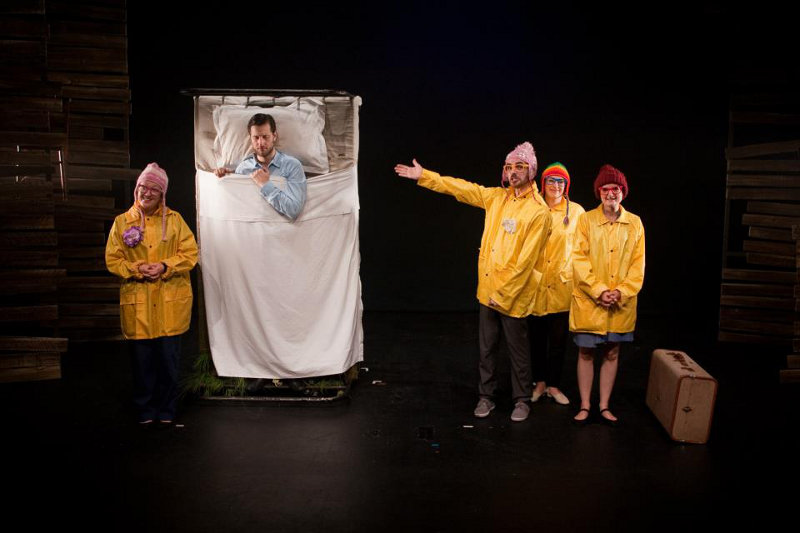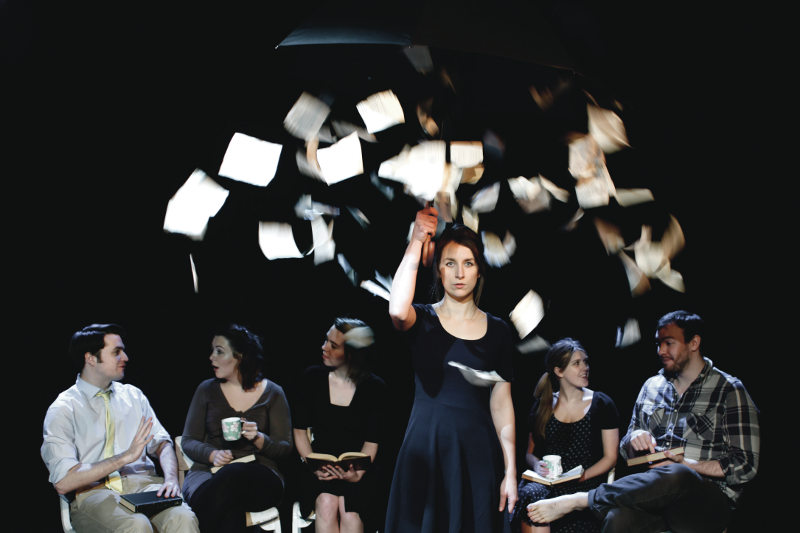Death is an unavoidable presence in our lives. I tend to find that when approaching such large subjects one can be overwhelmed by the sheer magnitude of thoughts, ideas, stories and feelings. In Death and Gardening Wet Picnic have chosen to tell a relatively straightforward story in treating the topic, and this is a good approach: to take a macrocosmic subject and translate it for our microscopic understanding. However, at times it feels that the ideas underpinning the story are a little undercooked.
We are greeted by three yellow-blazered ladies who go on to slip between playing different roles throughout; all have lovely stage presence and great comic characters. They are the gatekeepers of death and look at the topic subjectively – it’s their job. They find much absurd comedy here, which is wonderful to watch. Our central character, David Fanshaw, is also very likeable: his gawky physicality and endearing naivety make him the perfect protagonist to play against the real main character, death itself, yet it is this character that seems somewhat underdeveloped. The presence of death is never really felt with intensity; the shadow that it casts over everything in life, no matter how comic or likeable, is just not quite dark enough.
Death is a deep and philosophical part of human existence, and although comedy is surely needed to break this weighty matter and also to highlight the hilarity of our mortality, it sometimes feels that this piece deals with the comic element far more skilfully than it is able to deal with the tragic. Parody is a strong tool in looking at something serious, but an excellent grasp and understanding of the subject is needed before one can begin to parody. There are moments where the seriousness of the sadness that surrounds death are touched upon, with monologues from David Fanshaw’s loved ones, but unfortunately these just don’t quite reach far enough down into the depths to make the comedy a relief in its contrast.
Wet Picnic are a very talented ensemble of performers; they create beautiful characters, have excellent movement quality and a slick set to match. I am keen to see where they go next. The attention to detail that they give in their performances is lovely to watch; perhaps a longer look at detailing the subject underneath would allow them to create something truly gripping and engaging.





